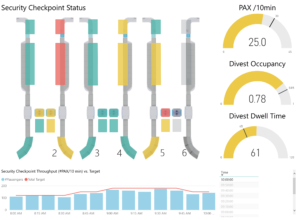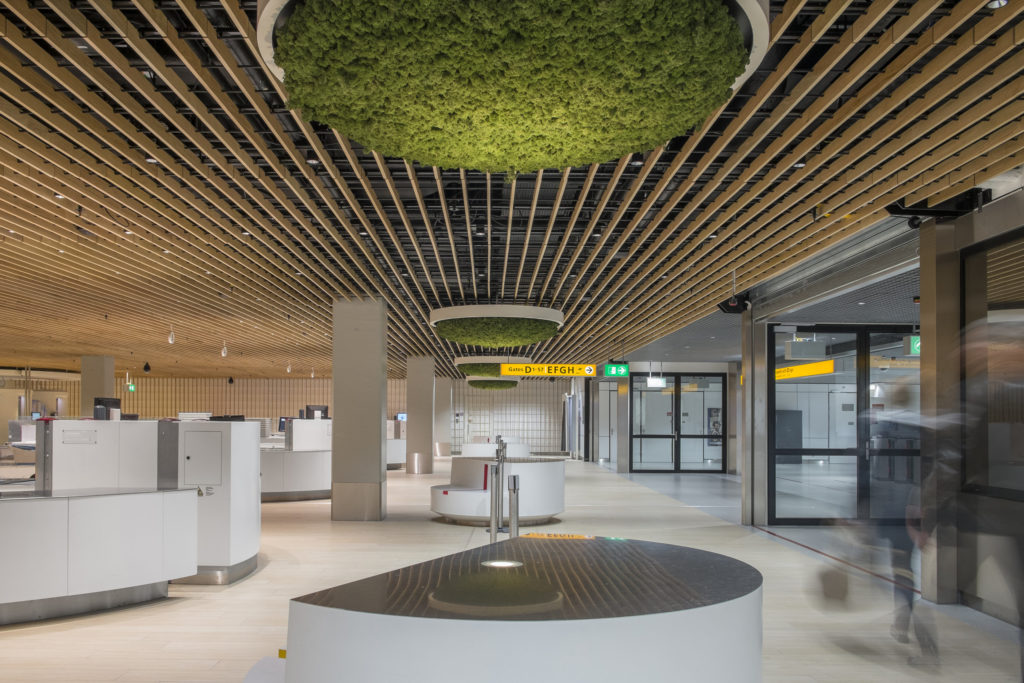A new exhibitor at Passenger Terminal Expo 2019 offers a radar technology to anonymously capture data and provide insights to enable far more efficient airport operation, particularly at security checkpoints
GRASP Innovations launched at the beginning of 2019, initially as a spin-off from Point FWD – a specialized consultancy firm dedicated to improving aviation security, both from a passenger experience (shorter queues and less hassle) and from an operational standpoint (increased efficiency and effectiveness).
“We launched GRASP first and foremost because we are convinced of the product and capabilities we have and can provide,” explains Robert Schuur, the company’s co-founder.
Schuur’s previous work at Point FWD was heavily dependent on data gathering and often required going on site for labour-intensive data captures, where a team would monitor a security checkpoint for up to a full week. The consultancy was keen to find a way to automate this task – and in September 2017 it first met with Xandar-Kardian, a high-tech development company based in Seoul, South Korea, whose capabilities provided the perfect match.
Xandar-Kardian specialises in advanced radar signal processing. The core technology powering its solutions is radar based on Impulse Radio Ultra-Wide Band (IR-UWB). Its hardware transmits up to 10 million nano-pulses per second to gather valuable information on its surroundings. This even enables the detection and monitoring of micro-movements and vibrations such as breathing and heartbeats.
“Everything we do is based on the same piece of hardware, an IR-UWB radar chip,” explains Schuur. “Initially we saw this technology as a method of substantiating the data-driven consultancy we provide with Point FWD. However, the IR-UWB radar-based algorithms enable a far broader range of solutions: from accurate occupancy sensing and people counting to life sign monitoring and high-level security. It didn’t us take long to determine that this was a truly unique technology with such a broad spectrum of opportunities that we needed to start a new company for it – GRASP Innovations!”
Sign of the times
There are of course already a number of technologies available to help airports track passenger movement – in response to a strong demand for more accurate data to inform decision making: “I don’t really want to go into a comparison between the technologies that are on the market,” responds Schuur, when asked to analyse current options.
“I think all around us we see a desire for more insight, be it in one’s personal life through fitness tracking, for example, or in a professional environment where data can help improve processes. In general, I feel like the time for gut feeling-based decision making – especially in environments where a lot is measurable – is coming to an end. We want to make well-informed and substantiated decisions.”
GRASP’s solution provides a large area of coverage, making it ideal for airports, while it also ensures completely anonymous data capture, and is fully GDPR-compliant, helping protect privacy.
“Our measurements are also ‘tokenless’ – we’re not looking for WiFi or Bluetooth signals – we continuously measure movement, resulting in very high sample rates,” adds Schuur. “You can also install our technology behind panels, completely out of sight, as it can ‘see’ through most materials, making it very easy to integrate into existing infrastructure.”
The technology can be used to accurately determine the usage of specific locations, including spread of people throughout the entire airport terminal.
“We are able to provide bi-directional information on how many people are moving through, for example, a hallway, jet bridge or corridor,” explains Schuur. This provides insight into the spread of passengers, including occupancy rate per location. When combined with footfall between these locations, insight is provided into terminal usage throughout the day.
With the provided insight, passengers can be actively informed about the occupancy of their locations of interest inside the terminal. A more even spread of passengers can be achieved in this way, enabling more efficient usage of facilities, and finally, an enhancement of the passenger journey experience.
Furthermore, analysis on historical occupancy and footfall data can enable a more efficient staff allocation at bars, restaurants, transfer desks, etc – ensuring both cost reductions and an improvement of the passenger experience.
“It’s important to realise our expertise is a little wider than ‘just counting’ – we want to fully understand a situation and match one or a combination of our applications to the environment,” adds Schuur. “This ultimately leads to creating actionable insight, sometimes this is achieved by counting people and sometimes through other measurements.”
Secure in the knowledge
Airport security is an obvious application for GRASP’s solution, especially in facilitating passenger throughput: “Currently, you walk up to someone and they tell you where to go – but these lane assignment personnel have very little or no insight to go on – they simply point you to the lane that looks the least busy – but is this really the best queue to join?” asks Schuur.
GRASP can use its radar-based solution to measure and analyze the performance of each step in the passenger screening process, such as the divest and reclaim locations in a security lane.
“Combining this with Xandar-Kardians’ near-field sensing solution, occupancy and dwell times in these locations can be measured,” he continues. “To provide information on the passenger flow through a security lane, foot traffic count (i.e. the amount of passengers per time interval) at strategic points can be used.”
 Usage, occupancy, dwell time and flow in a security lane provide insights in the behaviour of passengers inside the screening process. With this information, potential bottlenecks of process steps are easily identified. Also, lane productivity (processed number of passengers per time unit) can be determined based on a foot traffic measurement of passengers entering and exiting the filter, rather than just being based on a visual ‘hunch’.
Usage, occupancy, dwell time and flow in a security lane provide insights in the behaviour of passengers inside the screening process. With this information, potential bottlenecks of process steps are easily identified. Also, lane productivity (processed number of passengers per time unit) can be determined based on a foot traffic measurement of passengers entering and exiting the filter, rather than just being based on a visual ‘hunch’.
“By adding up all the data points, you get a much clearer overview of the performance of the security checkpoint, ensuring passengers are directed to the lane with the highest throughput or the most divesting spots open – in other words, you move from a gut-based decision to something far more scientific, with the load balancing process completely automated across the whole checkpoint, improving efficiency and throughput.”
With throughput bottleneck identification, effective measures per process step can be taken to improve the overall productivity of the security checkpoint. Due to the high granularity of the captured data, the effect of (potential) improvements in the security process can be assessed in detail. This enables airport security managers to implement and maintain a highly efficient security operation. Also, passenger arrival patterns and lane productivity enable a more efficient planning of security personnel, resulting in reduction of queue times and personnel costs.
Just how much the technology can improve throughput depends on an individual airport’s existing circumstances: “It’s hard to put a definite or exact percentage or figure on it, as it all depends on local situations and processes,” responds Schuur. “It can potentially – when executed right and in cooperation – result in a situation where automatic lane assignment is possible, resulting in a decrease of lane-assignment officers and a corresponding reduction of cost.”
 Furthermore, Schuur (pictured, right) notes automatic lane assignment results in a situation where the load on a checkpoint can be balanced and “tuned” accordingly: “High-performing lanes can handle more passengers and lanes with problems can be relieved. Data driven load balancing and guiding will lead to performance improvement overall, since the checkpoint will have an accumulated better performance. This might not be the sound-bite you’re looking for, but we don’t want to promise a percentage improvement that locally might not be achievable.”
Furthermore, Schuur (pictured, right) notes automatic lane assignment results in a situation where the load on a checkpoint can be balanced and “tuned” accordingly: “High-performing lanes can handle more passengers and lanes with problems can be relieved. Data driven load balancing and guiding will lead to performance improvement overall, since the checkpoint will have an accumulated better performance. This might not be the sound-bite you’re looking for, but we don’t want to promise a percentage improvement that locally might not be achievable.”
GRASP Innovations will be exhibiting at Passenger Terminal Expo, on March 26, 27 and 28, 2019, in London. Click here to see just some of the new products on show. And make sure you don’t miss the three-day Aviation Security, Border Control & Facilitation stream at the Passenger Terminal Conference.

